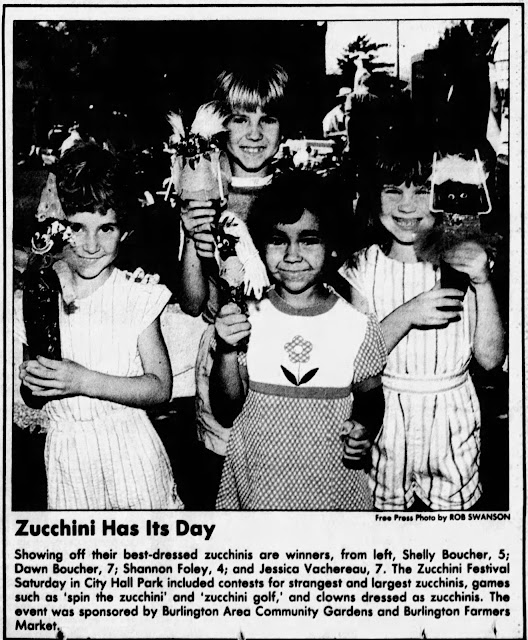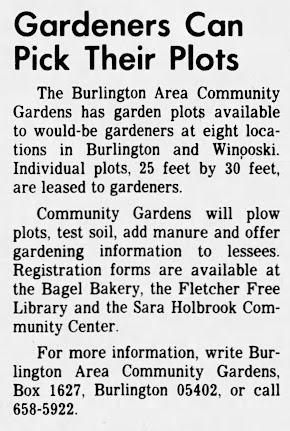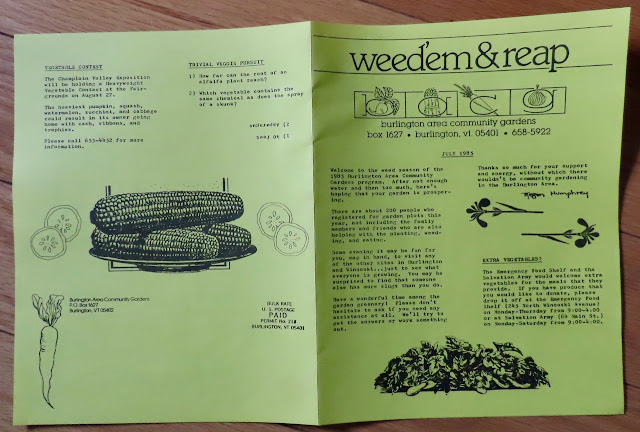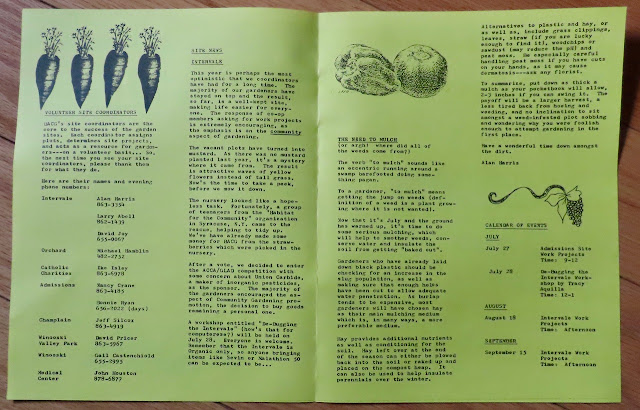BACG History Post #52
Printed and mailed newsletters were the mainstay of communications for 20th century nonprofit organizations. Each newsletter article had a job to do, whether it be to inform, acknowledge volunteers, or call gardeners to action.With limited pages, words were chosen carefully. Effective use of white space created a sense of structure and organization. Hand drawn artwork set a grassroots tone. The weed 'em and reap theme celebrated the rewards of gardening know-how coupled with timely effort.
The October 1985 Weed 'em & reap newsletter was released just in time for the annual cleanup of individual garden plots. The closing date was set for October 12. After cleaning up their plot, gardeners were given the opportunity to carry over their $5 deposit to the next gardening season or receive a refund by mail.
The fall newsletter acknowledged the Zucchini Festival volunteers, along with three community garden sites which won group awards. The Intervale and Catholic Charities sites received honorable mention in the American Community Garden Association's contest. The Orchard site was a prize winner for its community garden table display at the Champlain Valley Fair.












